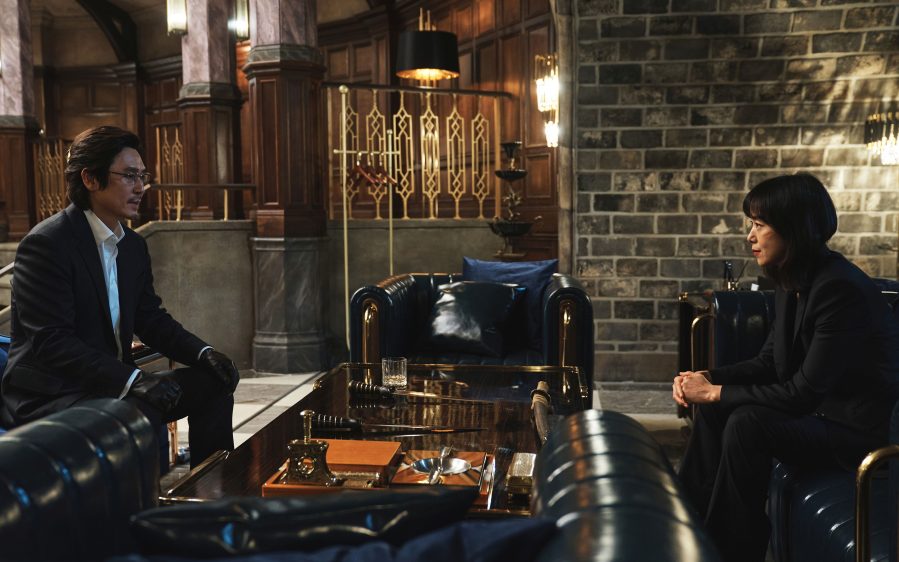
‘Kill Boksoon’ Review: A Stylish but Airless Korean Hitwoman Saga That Proves There’s No Rest for the ‘Wick’-esque
03/28/2023As we all know, there’s terrible pressure on the modern hitwoman to have it all: a head-of-the-table position at a prestigious assassin firm, a hunky younger lover, a rogues’ gallery of colorful assassin friends to slurp noodles with, a home greenhouse, a snappy wardrobe and a healthy relationship with a teenage daughter who is hesitantly coming out as gay. Writer-director Byun Sung-hyun probes these highly relatable issues with giddy verve, if not exactly originality. Netflix’s “Kill Boksoon,” which could be the Korean little sister to the “John Wick” franchise cross-fused with “The Long Kiss Goodnight,” is silly, splashy, CG-assisted nonsense — and at 2 hours 17 minutes, way too long. But it has flashes of surprising charm for a film whose philosophy runs no deeper than “You should have led a better life if you wanted to die of natural causes.”
This pearl of wisdom is dropped by Gil Boksoon (Jeon Do-yeon, excellent in a very different role from Lee Chang-Dong’s “Secret Sunshine,” which brought her a Cannes best actress award), as she prepares to dispatch a tattooed yakuza thug. Boksoon is the fortysomething mum of surly Jae-young (Kim Si-A) and a super-assassin, the star employee of MK Enterprises, a contract killing business run by the ruthless, smitten Cha (Sul Kyung-gu) and his slinky, perverse, incestuously inclined sister Min-kyu (Esom). Quite who put the hit on the yakuza guy is less important than the baroque, ritualistic way Boksoon is going to off him, first giving the unarmed man a sword to defend himself with, then selecting for herself a cheap DIY store axe. During the ensuing mill, she’ll often smile at a particularly neat move of her own or her opponent’s. She’s a lady who loves her job.
Already now, the best and worst of the movie is on offer. Cho Hyung-rae’s gimbaled, dextrous camerawork makes the tacky action fluid and fun, sometimes playing it out in the reflection of a puddle or through the shutter-motion of a passing train. We get to see different outcomes of the fight, only to snap back and realize they were merely Boksoon working through the likely scenarios in her head — thus Byun gets to show Boksoon dying multiple times in theory, without necessarily having to kill her off.
But it also makes the fighting rather weightless. CG blood spurts cleanly through the air with, at worst, a stray stripe landing attractively across Boksoon’s high cheekbone. By-the-numbers action music plays, synthesizing tension that never feels quite natural. And the settings can be deeply generic — the first clash is on a sealed-off section of partially constructed highway, a location so featureless it’s quite possible to wonder if it’s all meant to be a dream, or a video game or a dream inside a video game.
The physics of the fighting are unconvincing, with no single moment of contact really landing (Jeon Do-yeon is a graceful performer but there isn’t much power behind her punches). But it hardly matters, when each fight entails a few hundred such movements all strung together. This is the quantity-over-quality school of fight choreography, and it extends to the CG too, which is used unsparingly, not just in augmenting blood spatter, but in show-offy, impossible camera movements, such as when the lens passes through closed doors several times over, just because it can.
It all works to further insulate “Kill Boksoon” from any sense of reality. Despite a subplot about a venal local politician, there is never much sense of Boksoon interacting with the civilian world. Even the messy, inventive centerpiece fight, when her fellow assassin buddies are sicced on her by a jealous Min-kyu, takes place in a restaurant where, conveniently, nobody but them ever eats, so no bystanders are under threat from the whizzing skewers, careening cleavers, pans of sizzling hot oil or lethally wielded chopsticks.
This is a shame, because on the rare occasion the movie explores the irony of Boksoon’s divided existence, it gets to indulge a neat line in dark humor. Boksoon at lunch, clad in pink Chanel with the other school moms, hiding behind a deferential smile and a plate of petit fours thinking about her last “vacation,” spent garrotting some guy on a terrace with a view of the pyramids. Or another flashback when “This Guy’s in Love With You” rises on the soundtrack as newly murderous schoolgirl-Boksoon is framed beatifically against her abusive father’s dying, spasming silhouette. Or Boksoon having a heart-to-heart with her lover (Koo Kyo-hwan) while he crawls around with shoes on his feet trying to doctor the scene of an assassination. Offbeat moments like these hint at more than the movie ultimately cares to deliver: “Kill Boksoon,” like its heroine, could do with learning that there’s more to life than being highly efficient in execution.
Read More About:
Source: Read Full Article

